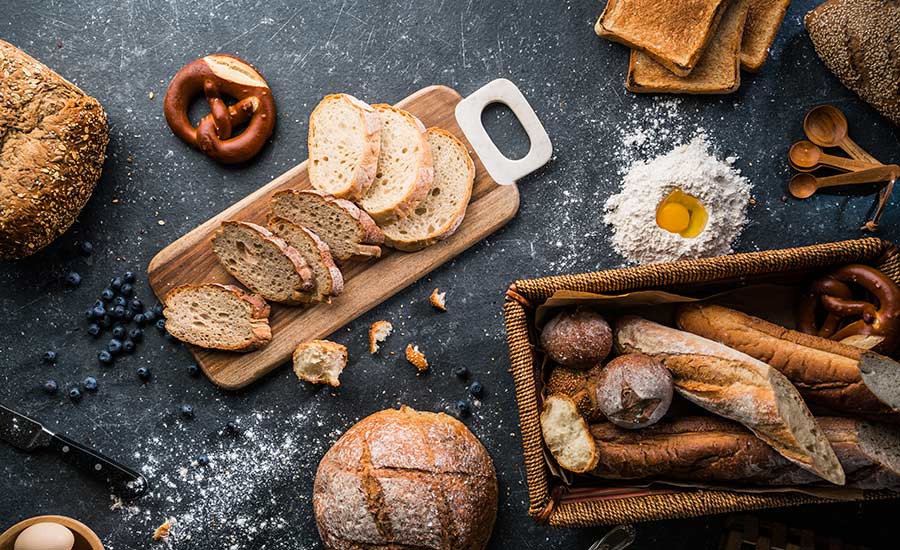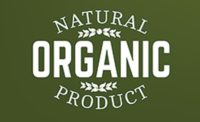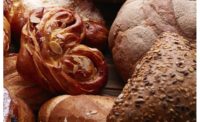Ingredient functionality in artisan bread production

Artisan breads sales are on the rise. The global artisan bakery market is expected to increase at a rate of 4.1 percent from 2019–24 to reach a market value of $4.5 billion (February 2020, “Artisan Bakery Market Research Report—Global Forecast till 2024,” Market Research Future). Their popularity is mainly due to their presence at the “fresh” parameter of the grocery store. Although the FDA has regulated breads, rolls, and buns, there is no legal definition for artisan breads. However, artisan breads are believed to be associated with a cleaner label and simpler ingredients. The main ingredients of artisan breads are usually flour, water, and yeast. Other ingredients are salt, sugar, fat, enzymes, herbs and spices, and flavors.
Flour is the No. 1 ingredient in all bread formulas. It is crucial for its specifications to be consistent for high product quality. High-protein flour, such as hard red winter flour, hard white spring flour, a combination of wheat flour and malted barley flour, and a combination of whole wheat flour and artisan refined flour, are common to artisan breads (“Flour quality and artisan bread,” A. Ross, Cereal Foods World, 63, 2018).
- Flour specification should target 10.5–12.5 percent protein, 0.48–0.55 percent ash, and 62–64 percent water absorption.
- Per Ross in “Flour quality and artisan bread,” the desired ash of flour for artisan bread is 0.48–0.55 percent, while the ash content in refined artisan bread flour can be up to 0.8 percent (on 14 percent moisture basis). Artisan breads can handle such high ash content because the bread requires longer fermentation time, and has a more creamy color that is associated with artisan-style flours.
- Aged flour is preferred. It has been oxidized over a period of time for forming stronger gluten through the interchange of sulfhydryl (SH) oxidation and SH-disulfide (SS) interchange, resulting in SS cross-links which strengthen the gluten network (“Flour aging—the effects on flour quality and baking performance,” Manfred Dirndorfer, Ph.D., 2012). This stronger gluten network allows bakers to use flour with a lower level of protein.
- Traditionally, fermentation of wheat or rye sourdough varies from 4 to 48 hours (“Gluten-free sourdough wheat baked goods appear safe for young celiac patients: a pilot study,” Journal of Pediatric Gastroenterology and Nutrition, 51, 2010). During this time, lactic acid bacteria can degrade gluten proteins in sourdough, which can be helpful for digestion in gluten-intolerant people (“Sourdough fermentation of wheat flour does not prevent the interaction of transglutaminase 2 with α2-gliadin or gluten,” Nutrients, 7, 2015).
- Depending on the total fermentation time, a longer fermentation of more than 8 hours provides the ability to use a weaker flour like winter wheat with 10–11 percent protein.
Water is responsible for triggering all natural chemical processes in dough, controls dough temperature, and hydrates dough components. Gluten development and subsequent volume relies on the presence of water. Water also serves as a solvent and dispersing agent for yeast, salt, and other minor ingredients that encourages fermentation. Water is also responsible for the consistency of bread dough.
- Hard water is preferred, because it contains minerals like calcium, sodium, and magnesium ions. Hard water is likely to be alkaline, but this is not always the case. Minerals provide nutrients for the yeast, thus strengthening the dough and accelerating fermentation.
- Water consistency is key. Since it is the second-largest ingredient in artisan bread baking, its taste, chemical content (chlorine) and mineral content all affect final quality. Water systems are currently available that can regulate the amount of minerals to help keep your process consistent and predictable.
- Do not use softened water. Many bakeries route water from their broiler systems to their mixer, only to add the minerals back into the brew as yeast nutrients. If you could just skip the broiler water system, and use a direct water feed into the mixer, you may save some money on buying yeast nutrients.
The leavening system (yeast or bacterial starter) is required for all fermented dough systems.
- Instant dry yeast is the preferred choice for artisan bread bakers. However, when you scale up, the next logical step would be to switch to a form of liquid or creamed yeast due to its consistency and its viability. Although this may be a big change for bakers, rest assured, there should be no difference in taste or viability of the yeast.
- Sourdough starter or masa madre are both bacterial starters, mainly lactic acid bacteria, and look like thick cake batter. Sourdough starter or masa madre that has gone longer can result in a more-sour, aromatic loaf. Although the processing is complex to handle, sourdough starter or masa madre can produce wonderful aromas for the finished artisan sourdough breads, and are relatively inexpensive. If you accidentally kill your starter, there are ingredient providers in the market that sell ready-to-use starters.
Salt is the most important ingredient responsible for the taste of bread.
- Salt is responsible for stabilizing the yeast fermentation rate, strengthening the dough, enhancing flavor, and increasing dough mixing time (“Role of salt in baking,” Cereal Foods World, 53, 2008).
- Compared to table salt, sea salt contains more minerals, like zinc, potassium, iodine, magnesium, etc. These minerals are considered as the nutrients for the yeast, thus it will help accelerate yeast fast fermentation.
Other cereal grains and pseudo-grains, like quinoa, soy, amaranth, millet, buckwheat, oatmeal, sunflower, and flax flours and meals, can also serve as alternative flours for artisan breads—but at lower levels of 5–10 percent. Since these flours disrupt the gluten networks, extra vital wheat gluten at 1–3 percent (dry flour weight) may be needed. In addition, water absorption needs to be recalculated whenever these flours are used.
Looking for a reprint of this article?
From high-res PDFs to custom plaques, order your copy today!









